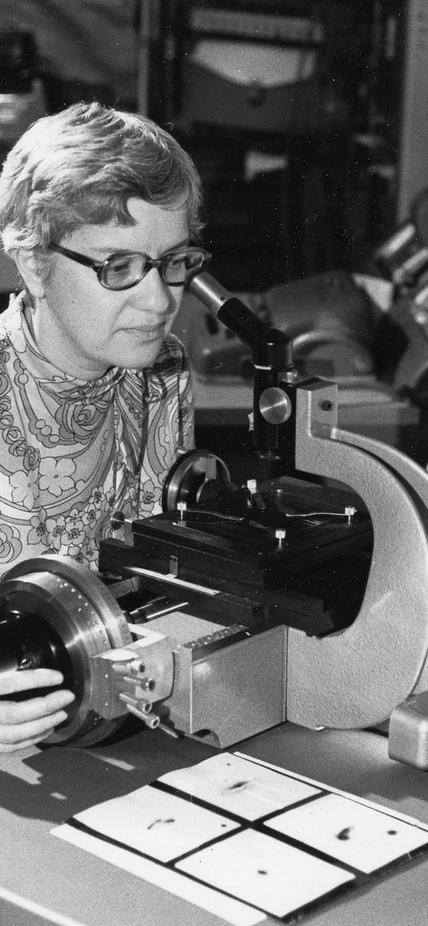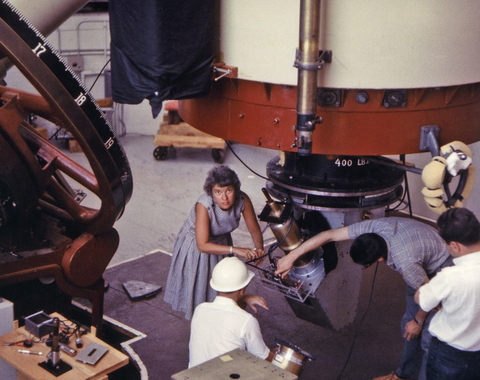Among the many treasures held in the Carnegie Science Archives is a remarkable collection of more than 500 photographs documenting the life and work of pioneering Carnegie Science astronomer Vera Rubin. The images, spanning candid scenes of Rubin at work, intimate moments with family and friends, and historic scientific gatherings and award ceremonies, offer a rare and personal glimpse into the career of one of the 20th century’s most influential astronomers. Digitization of the Vera Rubin Photograph Collection is ongoing, revealing new facets of her legacy with each image.
We’re highlighting 10 iconic photographs from the collection that capture Rubin’s enduring impact on astronomy, her curiosity, her collaborations, and her groundbreaking research that helped transform our understanding of the universe.
Vera Rubin's Homemade Telescope
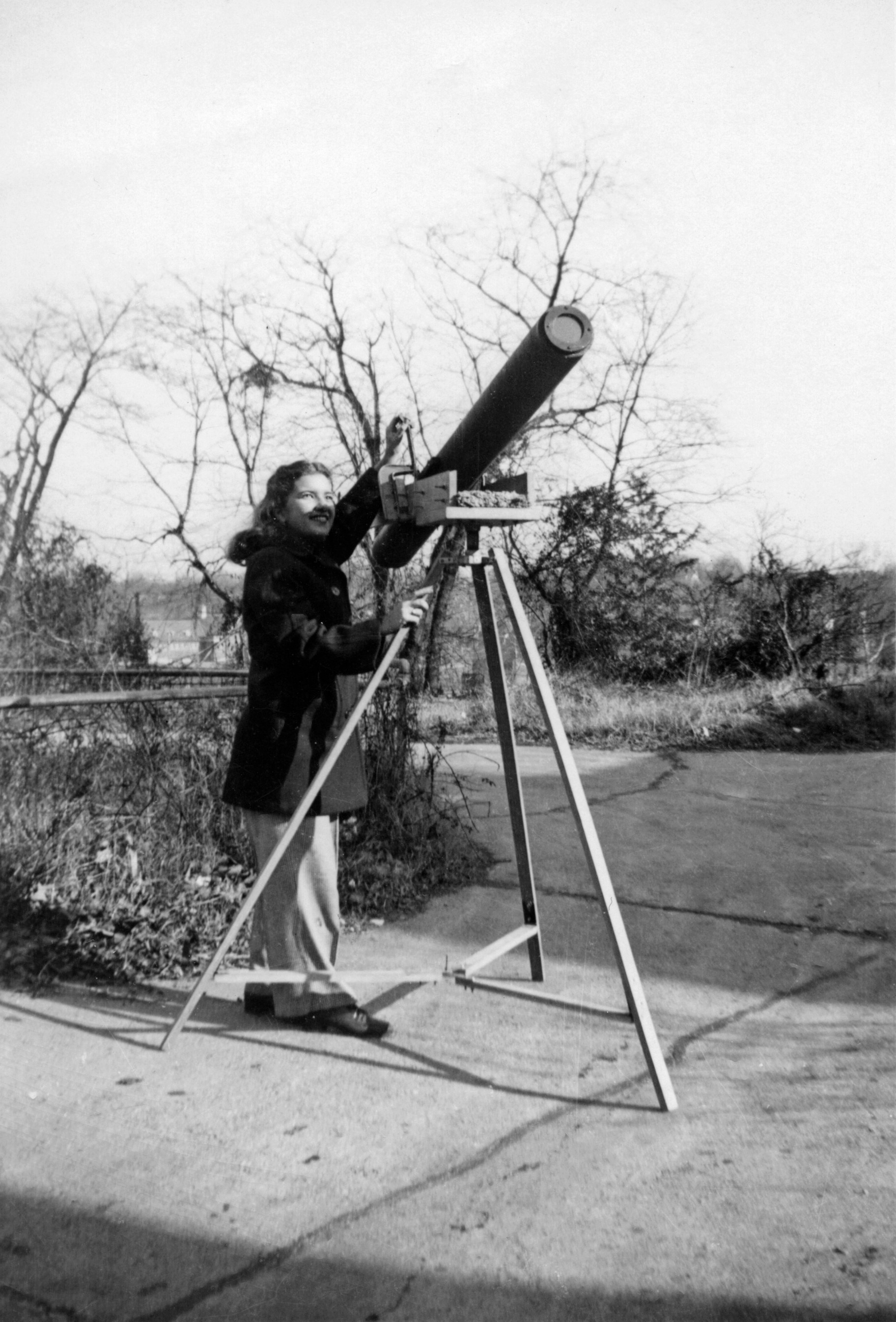
Vera Rubin with her homemade telescope. Rubin's fascination with astronomy began in childhood as she watched the night sky from her bedroom window. She built her first telescope with her father’s help, ordering a small lens from Edmunds Scientific Co. and sourcing a free cardboard tube from a linoleum company. She lugged the large, unwieldy tube home on the bus from downtown, an early sign of the dedication that would define her lifelong pursuit of astronomy. Credit: Carnegie Science
Vera Rubin at Vassar College
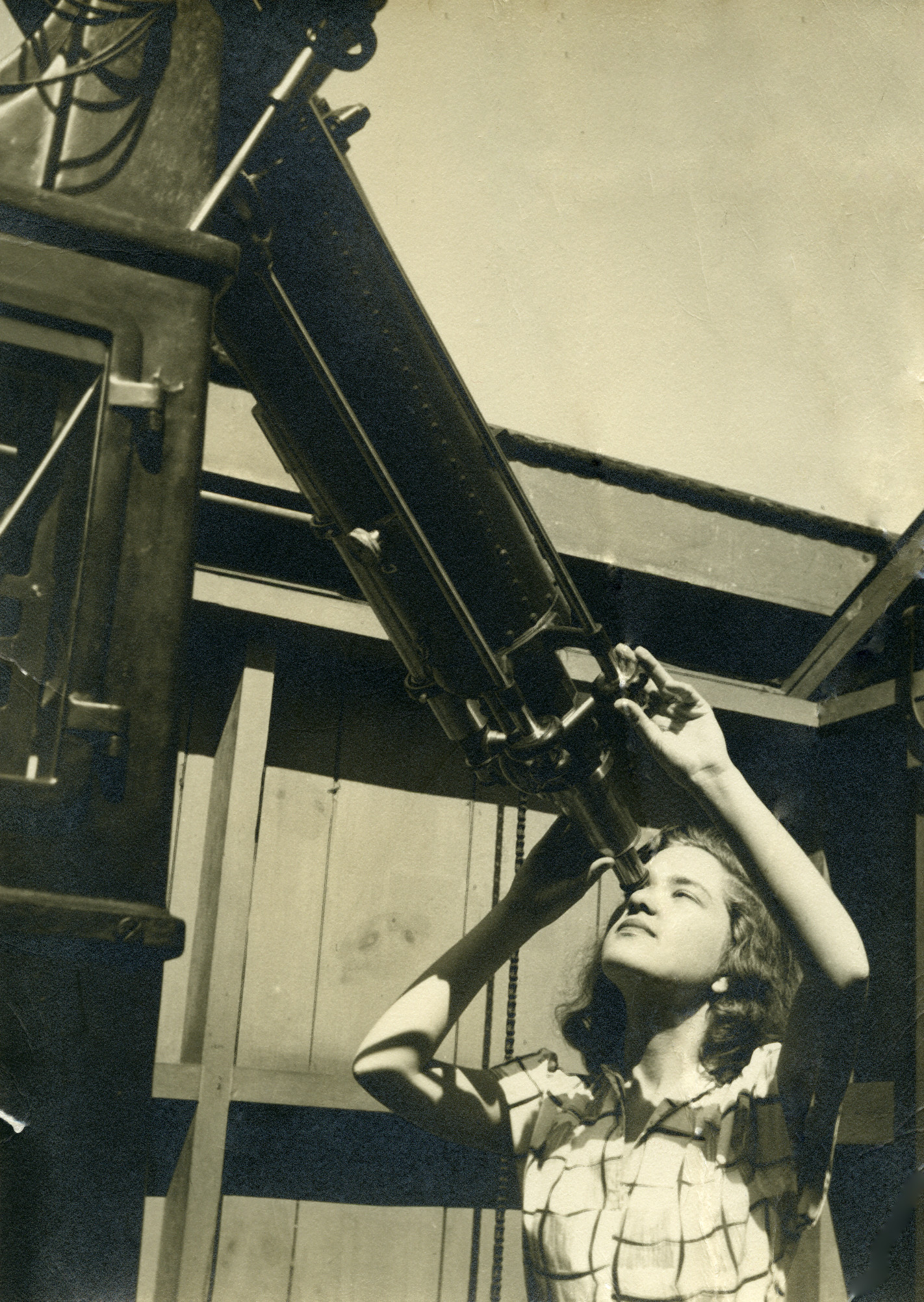
Vera Rubin posing at the eyepiece of the telescope at Vassar College Observatory in 1948. Rubin earned her undergraduate degree from Vassar College that same year. She had been drawn to the institution by its distinguished history of educating women astronomers, beginning with the first female professor of astronomy, Maria Mitchell. Rubin continued her studies at Cornell University for her master’s and Georgetown University for her Ph.D. Credit: Carnegie Science
Rubin Family Vacation
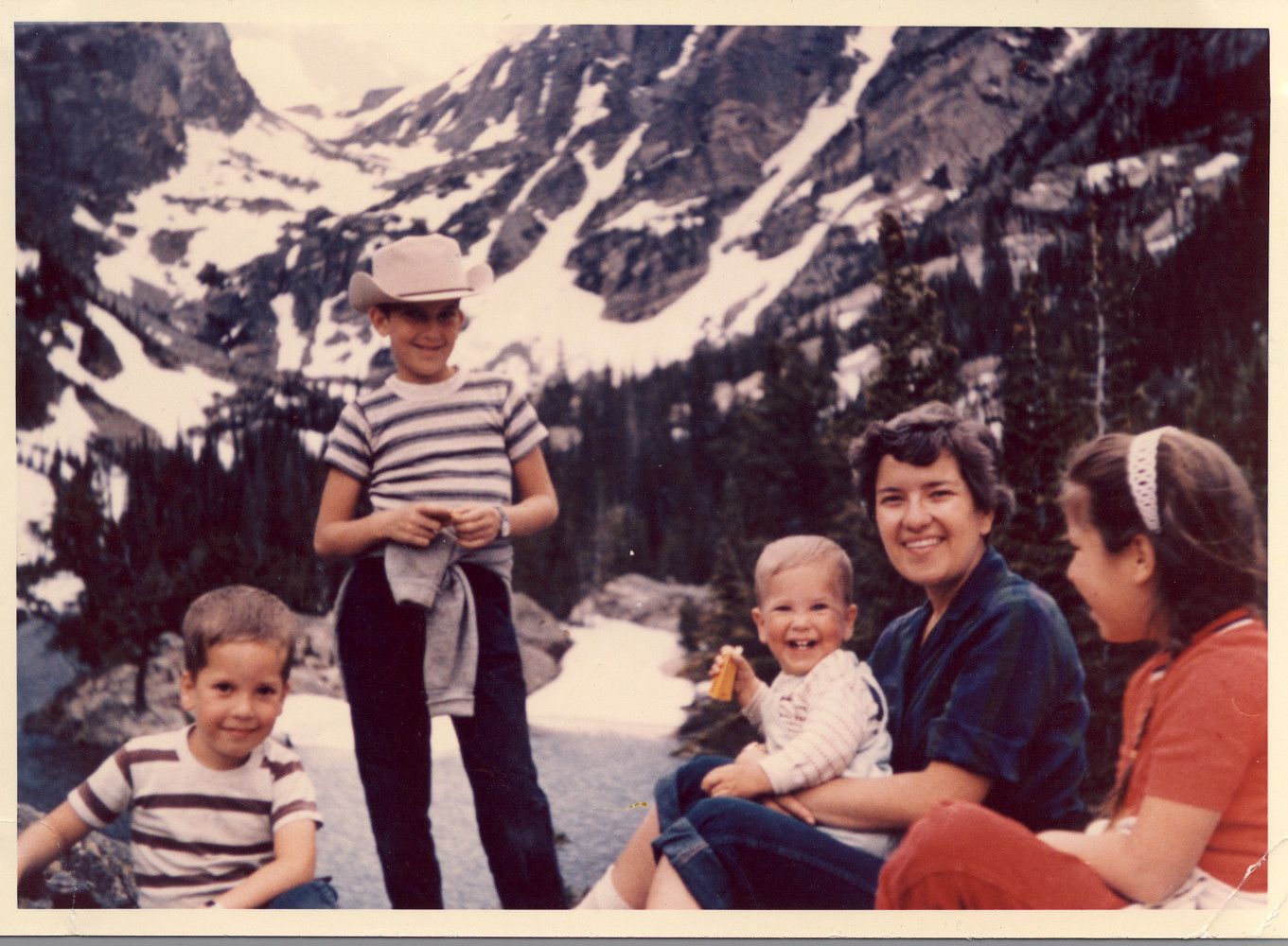
Vera Rubin with her children Karl, David, Allan, and Judy in 1961 at Bear Lake in Colorado’s Rocky Mountain National Park. The four Rubin children all earned Ph.D.s in the sciences or mathematics: David Rubin is a geologist; Judy Young, who died in 2014, was an astronomer; Karl Rubin is a mathematician; and Allan Rubin is a geologist. In the acknowledgements in her 1997 book Bright Galaxies, Dark Matters Rubin wrote “I succeeded in two goals–to raise a family and to be an astronomer.” Credit: Carnegie Science
Vera Rubin at Lowell Observatory
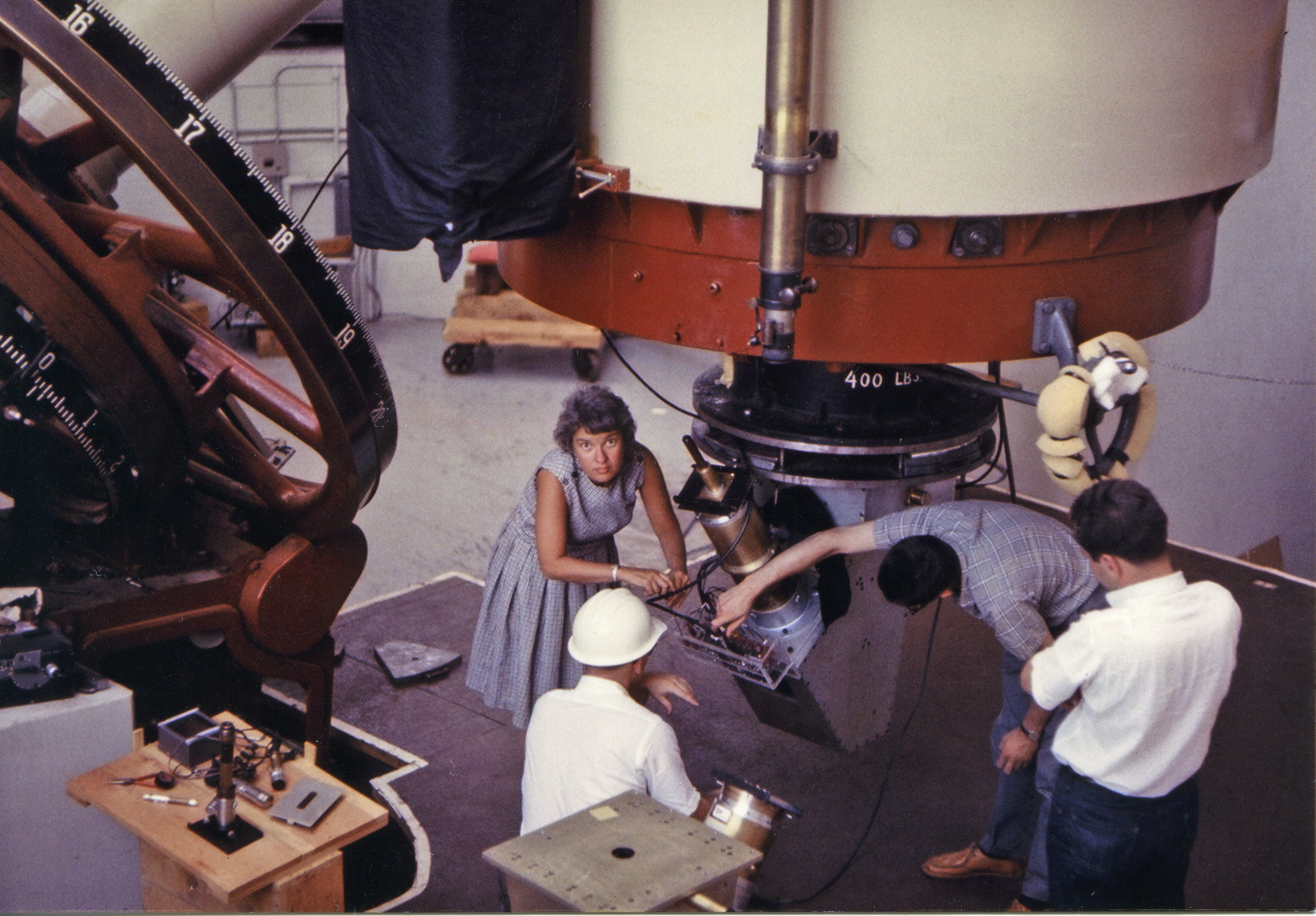
Vera Rubin working at Lowell Observatory in Flagstaff, Arizona, in 1965. This photograph was taken the same year Rubin joined Carnegie Science as a Staff Scientist, a position that freed her from teaching obligations and allowed her to focus entirely on research and observation. Rubin’s longtime research partner Kent Ford appears with his back to the camera in a white hard hat. This was one of their first observing runs together. Credit: Carnegie Science
Kent Ford's Image Tube Spectrograph
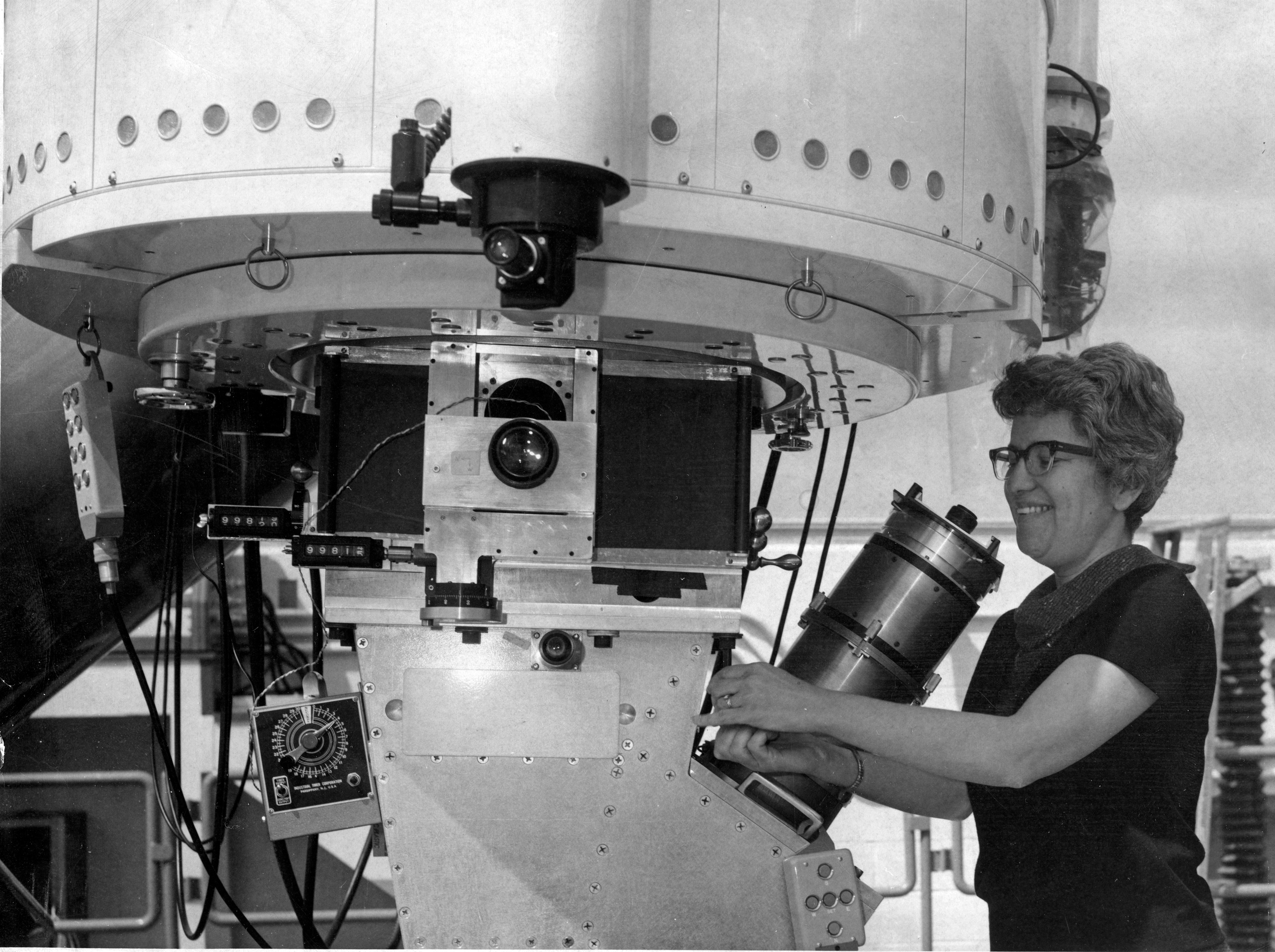
Vera Rubin at the DTM image tube spectrograph mounted on the 84-inch (2.1-meter) telescope at Kitt Peak National Observatory in the 1970s. The spectrograph was designed by Rubin’s longtime collaborator Kent Ford and built at Carnegie Science. When attached to a telescope, it greatly enhanced the ability to detect faint celestial objects, improving the efficiency of photographic detectors by over a factor 10. In the late 1960s Rubin and Ford began using this powerful tool to study the rotation of spiral galaxies, beginning with Andromeda. This work would eventually confirm the existence of dark matter—the invisible material that makes up more than 80 percent of the mass of the universe. Credit: Carnegie Science
Vera Rubin's "Measuring Machine"
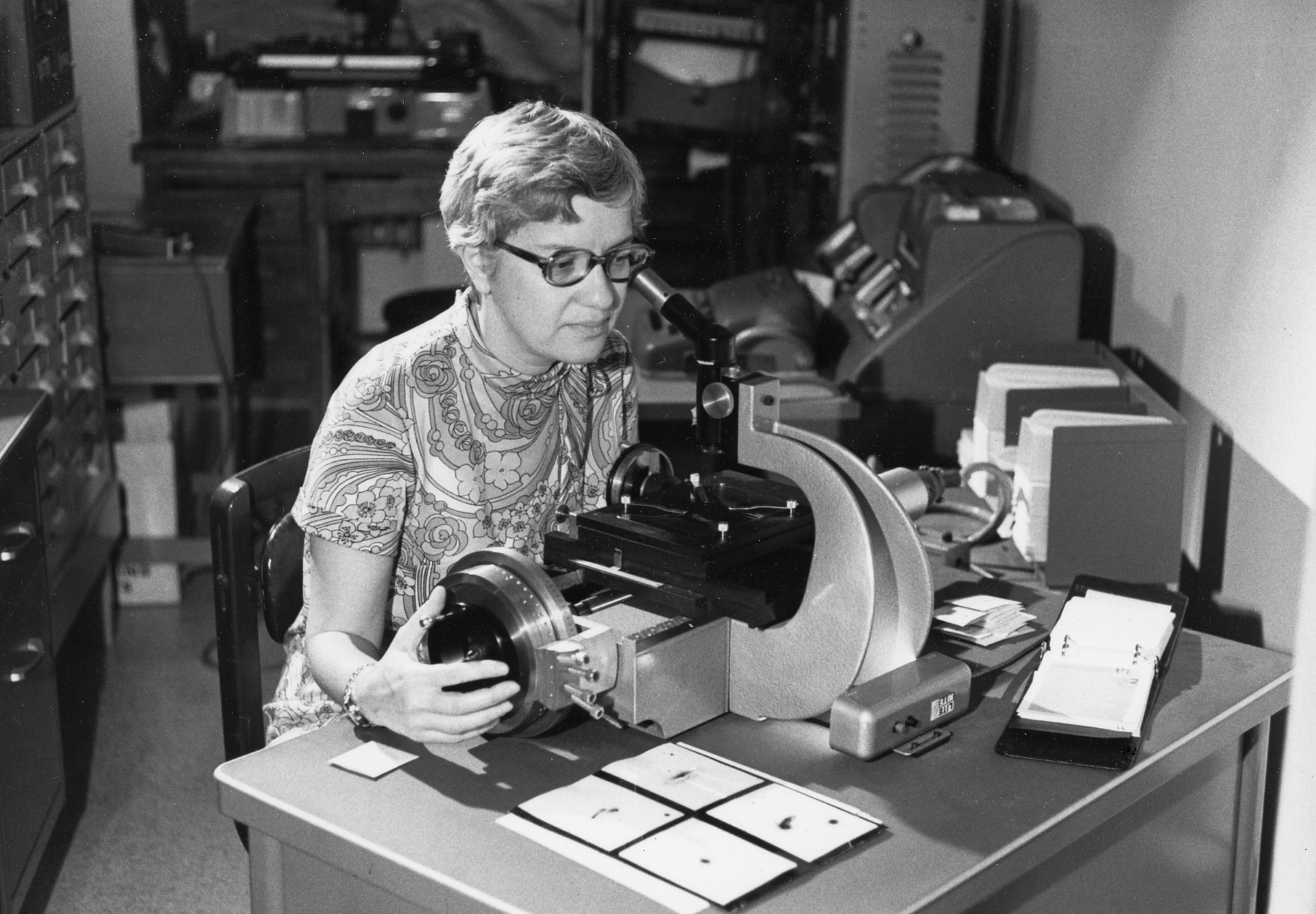
Vera Rubin at Carnegie Science’s former Department of Terrestrial Magnetism, now part of the Earth and Planets Laboratory, in 1972 using her “measuring machine” to analyze photographic plates. In the 1970s Rubin and collaborator Kent Ford collected data on dozens of spiral galaxies. Rubin’s measurements of the spectra data consistently showed flat rotation curves, providing the powerful observational evidence that supported the existence of dark matter. Credit: Carnegie Science
Vera Rubin and Kent Ford
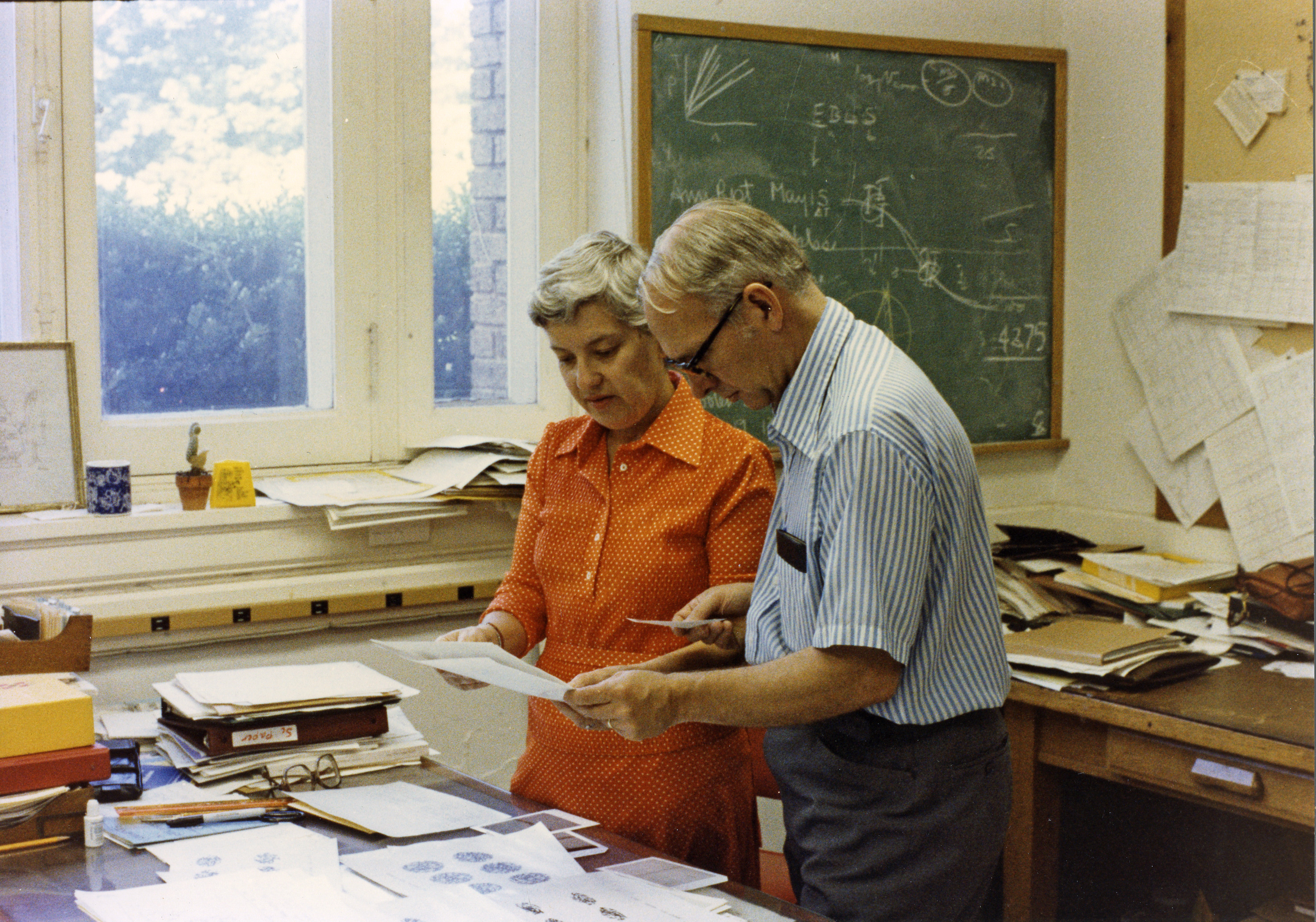
Vera Rubin and Kent Ford at work at Carnegie Science in 1984. Rubin and Ford’s 1970 paper on the Andromeda Galaxy’s flat rotation curve kicked off a scientific revolution. By 1980, the case for dark matter was undeniable. In 2013 the American Physical Society designated Carnegie Science’s former Department of Terrestrial Magnetism a registered Historic Physics Site in recognition of Rubin and Ford’s pioneering research. Credit: Carnegie Science
Women Astronomers at Las Campanas Observatory

Vera Rubin and fellow women astronomers in the console room of the 2.5-meter du Pont telescope at Carnegie Science’s Las Campanas Observatory in October 1985. Rubin broke barriers for women in astronomy and was an advocate for women in STEM throughout her career. Pictured are Renee Kraan-Korteweg (University of Basel), Deidre Hunter (Carnegie Science), Vera Rubin (Carnegie Science), Wendy Freedman (Carnegie Science), and Anja Schroeder (University of Basel). At the time, Freedman was conducting observations on the 2.5-meter telescope, Kraan-Korteweg and Schroeder were working with the 1-meter Swope Telescope, while Hunter and Rubin were scheduled to begin their observations on the 2.5-meter the following night. Credit: Carnegie Science
Vera Rubin's Globe Collection

Portrait of Vera Rubin in 1989 with a portion of her collection of celestial globes, by photographer Mark Godfrey. Rubin had an avid interest in atlases, star charts, and globes. Her collection began when her astronomy professor at Vassar College offered her an old celestial globe that was about to be discarded. Credit: Photograph by Mark Godfrey, courtesy of Carnegie Science
Medal of Science Presentation
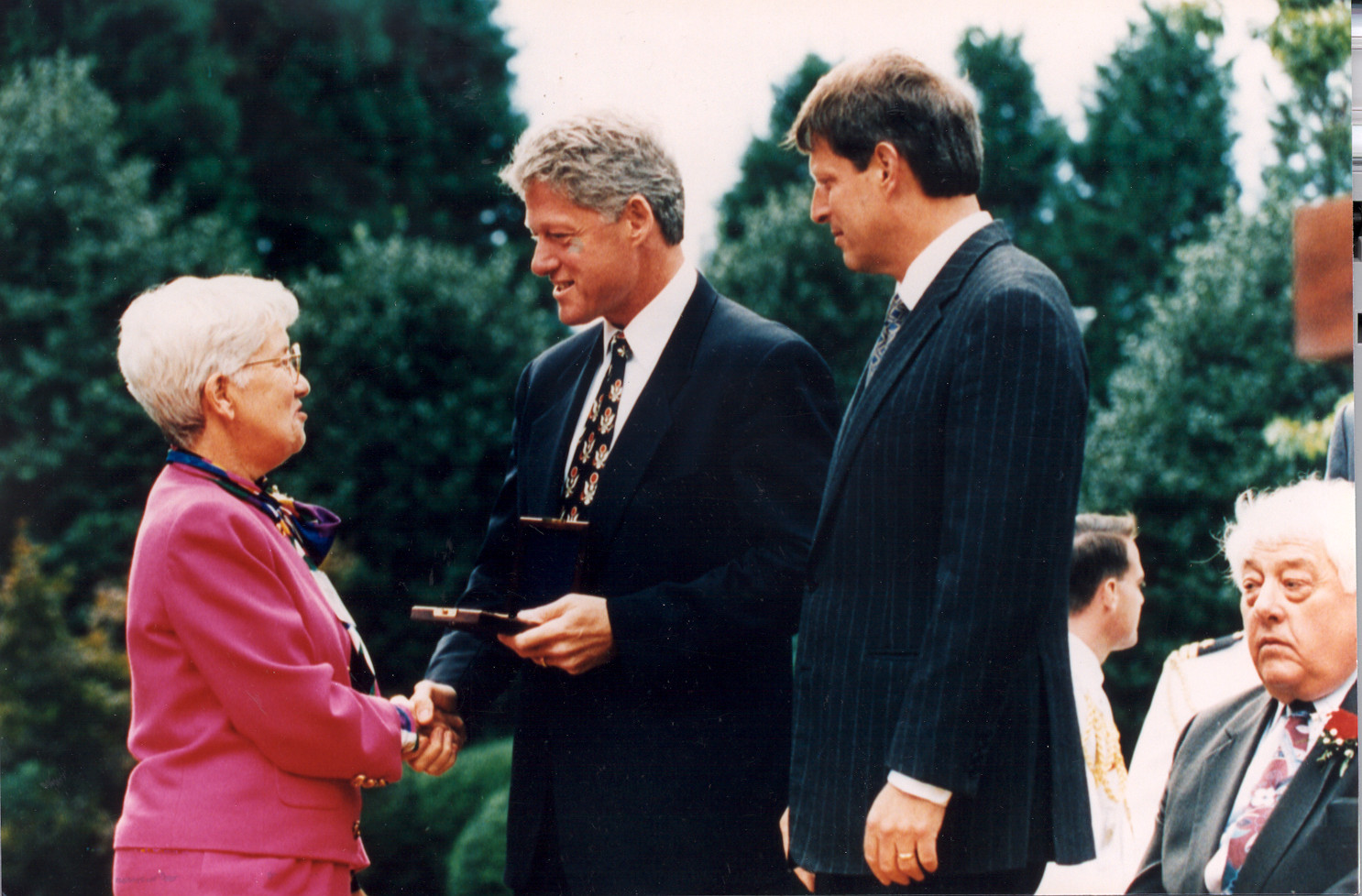
In 1993 Vera Rubin received the National Medal of Science, the nation's highest scientific award, for her "significant contributions to the realization that the universe is more complex and more mysterious than had been imagined." She received the National Medal of Science from President Clinton and Vice President Gore in a ceremony at the White House. Credit: Official White House photo, courtesy of Carnegie Science.
